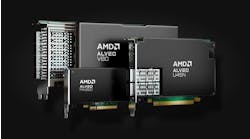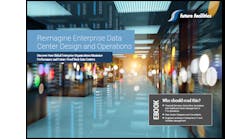AI and Data Center Energy Demands: Are Fuel Cells the Answer?
AI and GPU technology are advancing rapidly, promising incredible productivity gains. But, with these advancements come significant energy demand, putting a strain on the grid. In response, data center developers are pursuing innovative solutions, and grid operators are collaborating with distributed generation sources to address this increasing demand. On-site fuel cells have emerged as a promising solution to support the evolving energy needs of AI-driven data centers.
Capacity and Transmission Constraints
The 2025 Data Center Power Report projects that data centers will increase their share of U.S. electricity consumption from 3-4% today to 8-12% by 2030. While some capacity has been added to handle this growth, an additional 35 GW is expected to be needed within the next five years. This rapid growth puts pressure on the electric grid, which has limited power generation and transmission capacity. At the current growth rate of building high-voltage transmission infrastructure, it could take up to 80 years to meet this demand.
Higher Power Demand
As AI technology advances, the power requirements for data centers are evolving rapidly. AI data centers using GPU clusters require significantly more power than traditional CPU-based data centers, increasing from about 30 MW to 200 MW per data center.
Dynamic AI Workloads
AI data centers experience rapid fluctuations in power demand, ranging from ~90% to 30%, depending on whether they are training or inferring data. These variations occur over time scales from minutes to days. Such dynamic power consumption patterns place stress on grid assets, including switching, UPS, and other components.
Figure 1 illustrates how the power usage of AI training with GPUs can vary by 50% within just a few minutes. When multiple GPU clusters run parallel processes, these fluctuations become even more pronounced, causing power usage at the data center to swing by several megawatts multiple times an hour.
Indicative Dynamic AI Workload
AI load profiles like this may affect the steady nature of grid parameters, and a failure to address this swiftly could lead to power quality issues, brownouts, or blackouts. Power generation assets must respond quickly to maintain grid stability during demand fluctuations. Traditional natural gas peaker plants face significant wear and tear from these variations, reducing their lifespan.
Innovative Energy Solutions to Meet AI Demand
Data center developers have approached solving these challenges in various ways, including reopening decommissioned power plants and relocating data centers closer to existing power sources. However, these solutions need to be practical for different locations to effectively address AI growth, and so far, they haven’t proven to be scalable or adaptable across various regions. This is where fuel cells come in, offering a more viable and sustainable solution to meet the energy demands of AI data centers.
Fuel Cells for On-site Distributed Power Generation
Fuel cells offer an effective solution for on-site power generation, addressing the energy needs of AI data centers while supporting the grid. They convert natural gas, hydrogen, or biogas into electrical energy through an electrochemical process. This single-step conversion allows for efficient operation and quick response to load variations. Additionally, fuel cells generate power without combustion, resulting in negligible criteria pollutants like NOx, SOx, CO, and particulate matter (PM2.5 and PM10), avoiding adverse impacts on air quality in surrounding communities.
Benefits of Fuel Cells
Fuel cells can operate with over 90% capacity factor and are direct current (DC) power sources that use inverters for energy delivery. Inverter-based resources (IBRs) offer advanced control for seamless synchronization with the grid. IBRs can also easily integrate with on-site generation, like solar or storage systems, such as supercapacitors and batteries. Fuel cells can be quickly deployed behind the meter using existing natural gas pipelines, allowing data centers to bypass grid connection delays. They can either supplement the grid capacity (Figure 2) or operate entirely off the grid.
Using Load Following Fuel Cells and Supercapacitors for Dynamic AI Workloads: Fuel cells can react within seconds to support large step loads. Combining them with fast-reacting energy storage systems, such as supercapacitors, reduces the response time to milliseconds. Fuel cell-based systems are one of the best power generation technologies to load follow dynamic power profiles, with high amplitudes and short durations, as represented in Figure 3. While batteries have their place in applications requiring long-duration output, such as peak shaving on the grid, supercapacitors are a perfect fit for dynamic load applications, such as oscillating AI workloads, where frequent charging and discharging occur. Advancements in material sciences have led to high-capacity supercapacitor modules that can deliver and absorb intermittent power for several minutes and sustain over 100,000 cycles.
Fuel Cells Powering AI Data Centers
To meet the growing energy demands of AI data centers, we need reliable on-site solutions that can handle dynamic workloads and meet emission standards. Fuel cells and supercapacitors are perfect for this task. They help data centers manage their energy needs efficiently, ensuring reliable and sustainable operations. These technologies support increasing power demands and are ideal for AI-driven tasks. When using natural gas, they work seamlessly with carbon capture technologies and can switch to new fuels like hydrogen.
For a copy of the 2025 Data Center Power Report to gain more insights on the future of data center power, click here.

Razvan Panati
Razvan Panati is the Vice President of Product Strategy for Bloom Energy, responsible for accelerating the market technological leadership of Bloom Energy in supplying solutions for Microgrids and EV Charging Infrastructure. In his extensive career of more than 30 years Razvan has driven the implementation of numerous innovative products and solutions for microgrid applications, EV electrical powertrain and power conversion equipment.
Bloom Energy empowers businesses and communities to responsibly take charge of their energy. The company’s leading solid oxide platform for distributed generation of electricity and hydrogen is changing the future of energy. Fortune 100 companies around the world turn to Bloom Energy as a trusted partner to deliver lower carbon energy today and a net-zero future. For more information, visit www.BloomEnergy.com.

Kaushal Biligiri
Kaushal Biligiri is the Sr. Product Marketing Manager at Bloom Energy responsible for overseeing the power generation portfolio, microgrid solutions, and innovative technologies such as heat capture. With over a decade of industry experience, Kaushal possesses a robust background in product development, specializing in fuel cell-based microgrid architectures.
Bloom Energy empowers businesses and communities to responsibly take charge of their energy. The company’s leading solid oxide platform for distributed generation of electricity and hydrogen is changing the future of energy. Fortune 100 companies around the world turn to Bloom Energy as a trusted partner to deliver lower carbon energy today and a net-zero future. For more information, visit www.BloomEnergy.com.








